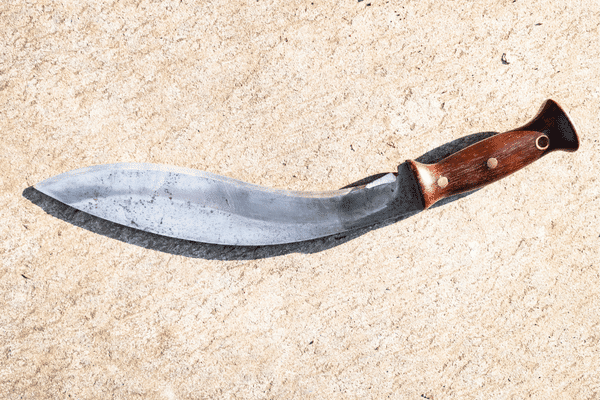Types Of Swords And Their Uses (Complete Details)
Throughout history, swords have been the embodiment of warfare, honor, and artistry. With their diverse designs and functionalities, each type of sword tells a story of its own, reflecting the cultures, tactics, and technologies of its era. Join us on an exploration of the captivating world of swords, as we delve into the various types and their distinct purposes.
1. Bastard Sword: Bridging the Gap Between Power and Precision
The bastard sword, also known as the hand-and-a-half sword, holds a unique position in the world of weaponry. Its design strikes a balance between the versatility of the longsword and the finesse of the one-handed sword. In this brief introduction, we delve into the distinct characteristics and strategic applications that define the bastard sword.- Versatile Length: Strikes a balance between longswords and shorter weapons.
- Two-Handed Mastery: Can be wielded with one or two hands as needed.
- Cutting Power: Ideal for delivering powerful slashes and hacking blows.
2. Rapier Sword: The Art of Precision and Elegance
The rapier, with its slender blade and intricate hilt, found its zenith during the Renaissance. Renowned for its thrusting capabilities, the rapier was a weapon of finesse, favored for gentlemanly duels and displays of graceful combat technique.- Thrust-Centric Blade: Engineered for accurate and focused thrusting attacks.
- Duels and Fencing: Ideal for gentlemanly dueling and exhibitions of technique.
- Characteristics: Slender blade, ornate hilt, agility-focused maneuvers.
3. Katana Sword: The Soul of the Samurai
The katana, with its curved single-edged blade, stands as a testament to the samurai's honor and martial prowess. Beyond its lethal efficiency, the katana symbolizes the samurai's code of conduct and spiritual connection to their weapon.- Curved Blade: Facilitates swift and fluid cutting motions.
- Samurai Symbol: Emblematic of the samurai's code of honor and loyalty.
- Cultural Icon: Worn edge up, versatile for one-on-one combat and rituals.
4. Longsword: A Masterpiece of Martial Craftsmanship
- Versatility: A double-edged blade suited for cutting and thrusting maneuvers.
- Balanced Design: Enables effective offensive and defensive tactics.
- Adaptable: Ideal for one-on-one combat, skirmishes, and mounted warfare.
5. Viking Sword: Echoes of Norse Valor
The Viking sword, an emblem of the storied Norse warriors, stands as a testament to their indomitable spirit and craftsmanship. With its distinctive design and rich history, this weapon reflects the legendary prowess of the Viking warriors who wielded it.
- Battlefield Dominance: Employed by Viking warriors in battles and raids.
- Cutting Edge: Designed for powerful cutting and slashing strikes.
- Shield-Piercing Thrusts: Pointed tip allowed for thrusting through armor and shields.
6. Claymore Sword: The Strength of the Highlanders
The claymore's massive two-handed grip and distinctive crossguard embody the power of Scottish clans. Its primary use was to break enemy formations with powerful sweeps, a weapon of choice for warriors defending their Highland heritage.- Two-Handed Grip: Empowers powerful and sweeping strikes.
- Highland Heritage: Represents Scottish pride and the spirit of clans.
- Tactical Edge: Effective for breaking enemy formations, inflicting heavy damage.
7. Scimitar Sword: The Elegance of Middle Eastern Warfare
The scimitar's graceful curve reflects the elegance of Middle Eastern cultures and their martial history. Wielded by cavalry, its design enabled swift, powerful slashes, making it a symbol of both cultural identity and tactical excellence.- Curvature: Enables swift and forceful slashing attacks.
- Cavalry Excellence: Wielded effectively by mounted warriors.
- Cultural Significance: Richly adorned hilt, representation of Middle Eastern heritage.
In the grand tapestry of history, each sword type represents a unique chapter, embodying the strategic minds and cultural values of their wielders. From dueling rapiers to battlefield broadswords, these weapons have been more than mere instruments of war; they have become symbols of courage, strategy, and the evolution of martial traditions across time and civilizations.




Comments
Post a Comment